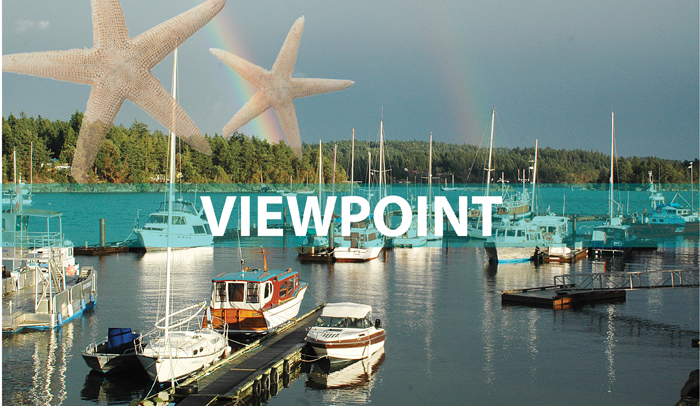By LAURA PATRICK
Salt Spring Islands Trust trustee
Land-use planning can be as boring as a two-sailing ferry wait and as fraught with drama as a high school musical. Today I’m writing to help you understand the draft land use bylaw 530 for accessory dwelling units that just had its first reading at the Salt Spring Local Trust Committee (LTC).
Planners call them “accessory dwelling units” but regular folk call them cottages and suites, and they’re not a new thing here on Salt Spring. But the bylaw is new, and with it we’re attempting to provide a policy that will grow our on-island compliment of resident landlords: people with a primary residence who are willing to let either a secondary suite, a suite associated with an accessory building or a cottage.
Your LTC gave first reading to the draft bylaw at our April 19 meeting. I supported first reading because I wanted to start the process and I’m serious about increasing the availability of long-term rental housing in our community.
Bylaws always pass through a legislated process following these steps:
• First reading = tabling or introduction
• Second reading = discussion about the principle and the content of the bylaw
• Third reading = final discussion, including any changes made along the way.
Community information meetings and a public hearing will be scheduled before third reading. These will provide us, as your elected representatives, with input from the community and from the people who will be impacted, and gives us a chance to make minor tweaks or major revisions, accordingly. It’s also your opportunity to ask questions and get information.
Following third reading and prior to adoption, the bylaw must be approved by the Executive Committee of Islands Trust to ensure that it conforms with the existing Trust Policy Statement.
So what happens now that we gave this bylaw its first reading? Staff will continue to research a number of items to inform possible revisions to the bylaw. We want to hear your suggestions about accessory dwelling units as a form of long-term rental housing. We want to hear from potential landlords as to what they may need from the Trust in order to step up and provide that housing.
As we progress through the bylaw’s phases, we can anticipate refinement of measures included in the bylaw to manage environmental impacts, prove sufficient quality and quantity of potable drinking water, and prove the ability to accommodate an increase in onsite sewerage capacity. As well, staff are exploring various mechanisms, such as covenants, that can be used to ensure that these units designated for rental are specifically used for long-term rental.
Allowing accessory dwelling units as rental housing will not solve the critical housing equity and workforce shortages we are experiencing here, but it will begin to expand the housing options. The vast majority of housing on Salt Spring consists of expensive single family homes, many of which have a large environmental footprint. We need a better mix of housing types to address the needs of our community. I believe we can increase the quality and quantity of housing options, while ensuring preservation and protection of the island’s biodiversity and freshwater, marine and forest resources.
Affordable, appropriate, accessible and attractive housing should be available for Salt Spring residents of all abilities, incomes, lifestyles and livelihoods.
For information about this draft bylaw and the Housing Action Program use this link: islandstrust.bc.ca/island-planning/salt-spring/projects/.
Be sure to subscribe to the Islands Trust’s website to receive email notifications.
Submit suggestions to improve the draft bylaw to ssiinfo@islandstrust.bc.ca. Contact me at lpatrick@islandstrust.bc.ca or 250-537-6822.

